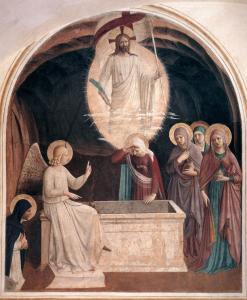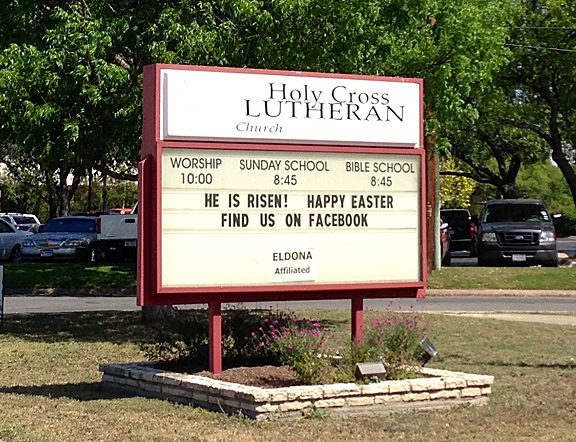Introduction to Eastertide: The Season of Easter
In my last post, I began to answer the question of what we might do if we were to celebrate Easter for fifty days. I explained that it’s not as if we ought to repeat the traditions of Easter Sunday fifty times in a row. But there are many aspects of Eastertide celebration that allow us to delight in the resurrection of Christ and thus grow in our faith as Christians.
One of the chief activities of Eastertide that I mentioned in my last post is deeper reflection on the meaning of the resurrection. Easter Sunday, as wonderful as it might be, allows us only to go so far. Eastertide opens up new territory for learning and reflection. To this end, I would recommend two books by Eugene Peterson, who is best known as the translator of The Message. The first is called Living the Resurrection: The Risen Christ in Everyday Life. Here, Peterson reflects on what it would be like to live out the resurrection in our daily lives. The second book is Practice Resurrection: A Conversation on Growing Up in Christ. In some ways, this book is a sequel to Living the Resurrection. It is, in actuality, an exposition of Paul’s letter to the Ephesians, which is truly a book about how to practice resurrection.
But there’s more still. If you have influence over the corporate worship of your church (if you’re a pastor or a worship leader), you can allow the seven weeks between Easter Sunday and Pentecost Sunday to be a time of continued corporate celebration of the fact that Christ is risen. When I was at Irvine Presbyterian Church, for example, we sang Easter hymns and songs on the Sundays following Easter. We also continued to display the liturgical colors associated with Easter, white and gold signifying light, victory, and eternal life.

If you’re not in a place to impact your corporate worship, you can still do things to celebrate the resurrection. For example, if Lent is a season for fasting (giving up something positive), Easter is a season for feasting (adding something positive to your life). So, if you gave up chocolate for Lent, in Eastertide you might intentionally eat chocolate, enjoying the goodness of life and remembering that joy of the life to come. (Note: Easter is not a time for pigging out, but rather to affirm the delight of God-given life.) Or you might put a vase of flowers someplace where you’ll see it regularly. Many people buy Easter Lilies for Easter Sunday and keep them for several days until the blooms begin to wilt.
One of my personal traditions, like in the seasons of Advent, Christmas, Lent, and Holy Week, is to play music with specific Easter themes. Strangely, however, given the importance of Easter to the Christian, there are not nearly as many well-known Easter pieces as there are Christmas or Holy Week compositions. In fact, I have only three recordings that I consider to be Easter-focused.
1. Johann Sebastian Bach’s Easter Oratorio. This joyful cantata narrates the events of Easter morning. To hear excerpts from this recording or to order the Easter Oratorio, click here.
2. Johann Pachelbel’s Easter Cantatas. Yes, the composer of the omnipresent “Canon in D-Major” wrote other pieces, including several Easter cantatas (vocal compositions with accompaniment). Pachelbel, by the way, was a friend of the Bach family, and had some measure of influence on Johann Sebastian himself. Among Pachelbel’s cantatas is one entitled “Christ ist erstanden” (“Christ has risen”). The first few words are: “Christ has risen from all his suffering, of this we should all be glad.” To order the Easter Cantatas, click here.
3. My third Easter-focused piece of music may surprise you. I’m going to wait until my next post to discuss it in some depth. Stay tuned . . . .











